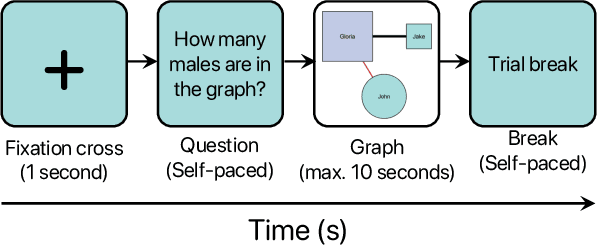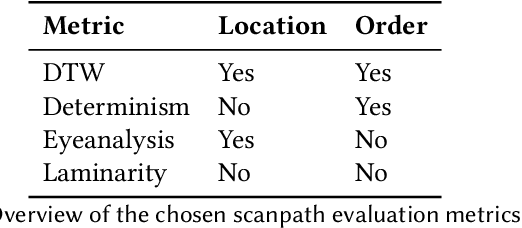Parvin Emami
A Comparative Study of Scanpath Models in Graph-Based Visualization
Apr 01, 2025



Abstract:Information Visualization (InfoVis) systems utilize visual representations to enhance data interpretation. Understanding how visual attention is allocated is essential for optimizing interface design. However, collecting Eye-tracking (ET) data presents challenges related to cost, privacy, and scalability. Computational models provide alternatives for predicting gaze patterns, thereby advancing InfoVis research. In our study, we conducted an ET experiment with 40 participants who analyzed graphs while responding to questions of varying complexity within the context of digital forensics. We compared human scanpaths with synthetic ones generated by models such as DeepGaze, UMSS, and Gazeformer. Our research evaluates the accuracy of these models and examines how question complexity and number of nodes influence performance. This work contributes to the development of predictive modeling in visual analytics, offering insights that can enhance the design and effectiveness of InfoVis systems.
Impact of Design Decisions in Scanpath Modeling
May 14, 2024



Abstract:Modeling visual saliency in graphical user interfaces (GUIs) allows to understand how people perceive GUI designs and what elements attract their attention. One aspect that is often overlooked is the fact that computational models depend on a series of design parameters that are not straightforward to decide. We systematically analyze how different design parameters affect scanpath evaluation metrics using a state-of-the-art computational model (DeepGaze++). We particularly focus on three design parameters: input image size, inhibition-of-return decay, and masking radius. We show that even small variations of these design parameters have a noticeable impact on standard evaluation metrics such as DTW or Eyenalysis. These effects also occur in other scanpath models, such as UMSS and ScanGAN, and in other datasets such as MASSVIS. Taken together, our results put forward the impact of design decisions for predicting users' viewing behavior on GUIs.
 Add to Chrome
Add to Chrome Add to Firefox
Add to Firefox Add to Edge
Add to Edge